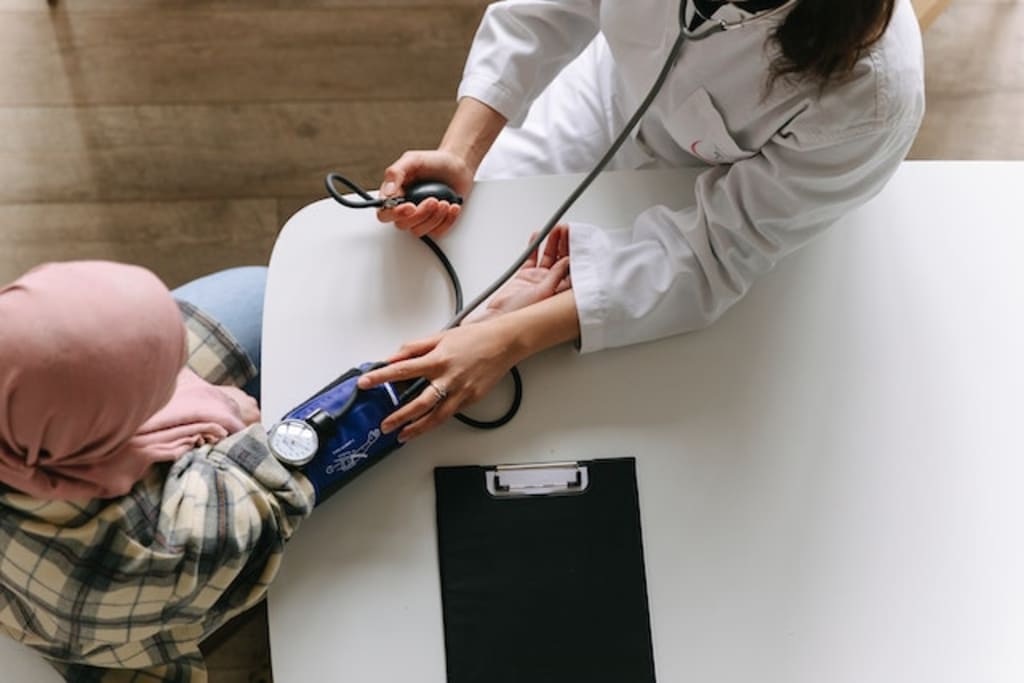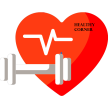I don't think people realise how important it is to have your blood pressure checked. Stroke is so sudden, so catastrophic.
Blood Pressure

Blood Pressure: Understanding, Measuring, and Managing Hypertension
Blood pressure is an important indicator of cardiovascular health. It refers to the force exerted by circulating blood against the walls of arteries as the heart pumps it throughout the body. Blood pressure is measured in millimeters of mercury (mmHg), with two numbers representing systolic pressure (the higher number) and diastolic pressure (the lower number).
A normal blood pressure reading is below 120/80 mmHg. Elevated blood pressure is defined as a reading between 120-129/less than 80 mmHg. Hypertension, or high blood pressure, is a reading of 130/80 mmHg or higher. Hypertension is a significant risk factor for heart disease, stroke, and kidney disease. According to the Centers for Disease Control and Prevention (CDC), nearly half of American adults (108 million) have hypertension or are taking medication for it.
Understanding Blood Pressure
Blood pressure is measured using a sphygmomanometer, a device consisting of an inflatable cuff, a pressure gauge, and a stethoscope. The cuff is wrapped around the upper arm and inflated to a pressure higher than the systolic pressure. The cuff is then slowly deflated while the healthcare provider listens to the brachial artery with the stethoscope. The first sound heard is the systolic pressure, and the point at which the sound disappears is the diastolic pressure.
Blood pressure can also be measured using an automated device called an oscillometric monitor. These monitors measure blood pressure using a sensor that detects vibrations caused by blood flow. The monitor then calculates the blood pressure based on the detected vibrations. These devices are often used in clinics, hospitals, and pharmacies.
Blood pressure can fluctuate throughout the day and can be influenced by many factors, including physical activity, stress, medications, and diet. Blood pressure can also increase with age, as arteries become stiffer and less elastic.
Types of Hypertension
There are two types of hypertension: primary (essential) hypertension and secondary hypertension.
Primary hypertension is the most common type of hypertension, accounting for 95% of cases. It is also known as essential hypertension because it has no identifiable cause. Primary hypertension is thought to be the result of a combination of genetic and environmental factors, including obesity, physical inactivity, stress, and a diet high in sodium and low in potassium.
Secondary hypertension is caused by an underlying medical condition, such as kidney disease, thyroid disorders, or sleep apnea. Secondary hypertension accounts for about 5% of cases of hypertension.
Complications of Hypertension
Hypertension is a major risk factor for cardiovascular disease, the leading cause of death in the United States. Hypertension can damage blood vessels and increase the risk of atherosclerosis, a condition in which fatty deposits build up in the arteries, narrowing and hardening them. This can lead to heart attack, stroke, and peripheral artery disease.
Hypertension can also damage the kidneys, leading to chronic kidney disease and kidney failure. It can cause damage to the eyes, leading to vision loss or blindness. Hypertension can also increase the risk of cognitive decline and dementia.
Treatment and Management of Hypertension
Treatment for hypertension depends on the severity of the condition and any underlying medical conditions. Lifestyle changes are often the first line of treatment for mild to moderate hypertension. These changes may include:
- Weight loss
- Regular physical activity
- A healthy diet, including a low-sodium, high-potassium diet
- Limiting alcohol intake
- Quitting smoking
- Managing stress
If lifestyle changes alone are not enough to control hypertension, medication may be prescribed. There are several types of medications used to treat hypertension, including:
- Diuretics: These medications help the kidneys eliminate excess water and sodium from the body, which can reduce blood pressure. Examples of diuretics include hydrochlorothiazide (Microzide), furosemide (Lasix), and spironolactone (Aldactone).
- ACE inhibitors: These medications relax blood vessels, allowing blood to flow more easily and reducing blood pressure. Examples of ACE inhibitors include lisinopril (Zestril), enalapril (Vasotec), and ramipril (Altace).
- Angiotensin II receptor blockers (ARBs): These medications block the action of angiotensin II, a hormone that can narrow blood vessels and increase blood pressure. Examples of ARBs include losartan (Cozaar), valsartan (Diovan), and olmesartan (Benicar).
- Calcium channel blockers: These medications block the movement of calcium into blood vessel walls and heart cells, which can relax blood vessels and reduce blood pressure. Examples of calcium channel blockers include amlodipine (Norvasc), diltiazem (Cardizem), and verapamil (Calan).
- Beta blockers: These medications slow the heart rate and reduce the force of the heart's contractions, which can lower blood pressure. Examples of beta blockers include metoprolol (Lopressor), carvedilol (Coreg), and atenolol (Tenormin).
About the Creator
Ravindu Laksara
Good health is not something we can buy. However, it can be an extremely valuable savings account.






Comments (1)
❤️